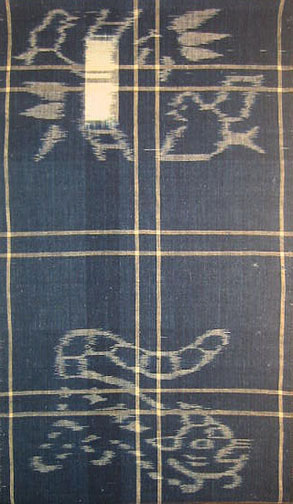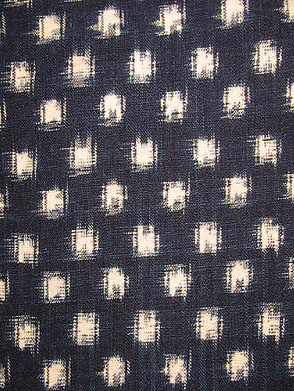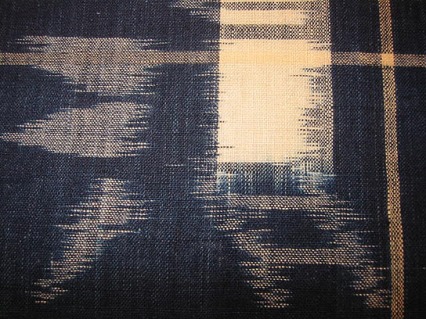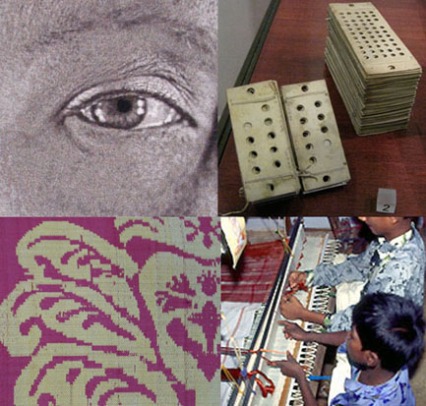This week’s weave is an alpaca sample I wove in 2003, and although it wasn’t right for my scarf collection, I saved it because I liked it and because it was one of the more successful deflected-thread experiments out of many that I did. (In this article, I’ll use the words “deflected” and “distorted” interchangeably.)
I pulled the swatch out of my archive last week because of two unrelated experiences: watching the debut of the Weavolution website; and listening to a radio interview with film director Francis Ford Coppola. To explain:
Weavolution is an ambitious weavers’ networking site that in its first week has attracted hundreds of weavers from all over the world (including me), who are sharing photos and information about themselves and their work. I’m disappointed that I don’t have a current weaving project to post on Weavolution — and that’s where a comment of Mr. Coppola’s comes in.
Coppola said that the idea for the screenplay he wrote for his new movie, “Tetro,” came from a half-page of notes that he made in film school in 1962. So (cartoon lightbulb moment) I went back through some of my earlier work to see if there was anything there that I might like to share. There was, and this post is about one of those pieces (image above).
At that time (2003) I was trying to create a three-dimensional effect that looked something like chain-mail mesh, so I used a weave that distorted both the warp and weft threads on both sides of the cloth. Yarn distortions are created by weaves that juxtapose areas with few interlacings (loose yarns) with areas of tightly interlaced tabby (firm yarns). I chose high-shrinking merino wool for the deflected threads and lower-shrinking alpaca for the tabby “cells.”
[Complete weaving information for “double-sided deflected thread weave” has been posted in Weavolution’s “projects” and “drafts” sections.]
After machine-finishing, the merino threads shrank snugly around the alpaca threads and drew them in so they puffed up and made the diamond shapes in the weave shown above. The sample came out very soft, a little fuzzy, and definitely three-dimensional. I haven’t come up with any exciting new applications for this idea, but even if I don’t, I’ve enjoyed looking back at it.
The way that practical considerations pulled me away from pursuing this idea further is another reason the Coppola interview resonated with me. As Coppola said: I’m returning to personal filmmaking as much as I can. There was a period of my career when I owed Chase Manhattan Bank a lot of money, when I made a film every year and I didn’t write the script and I didn’t write the story and I was lucky and grateful to have the job to make that payment but I think cinema’s also big enough to have personal filmmaking and heartfelt work — the artist is trying to look at his own life and understand better so that draws me back to the themes that I find interesting or touching.
I can’t wait to see the movie.





